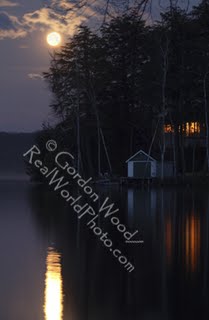GETTING THE IMAGE

It seems to me that there are two types of stock photographers. There are those who shoot prepared themes under controlled lighting conditions using models. Others get outdoors and photograph whatever they feel like shooting.
I guess I’m one of the latter. The problem with this modus operandi is that I’m either in a perfect situation with perfect lighting but forgot to bring my camera (or with no time to stop), or I scout a place and return to it again and again, never to see that perfect light again.
Like most outdoor stock shooters, I’m constantly seeing potential pictures while driving. The trouble is, these scenes are often from a freeway where only emergency stopping is allowed, or they’re far from home with little chance that you’ll return.
That’s why vacations are often the best time for me to plan some consolidated shooting time. While we can’t control the weather, we can at least take the time to explore, see something new, and return to locations again and again until the light’s right.
Every now and then, a little serendipity happens. Not to say that this is the best photo I’ve ever taken, but the photo of the cottage on the lake under a full moon is one of those. (This and other Ontario images can be viewed at my Ontario Travel Gallery). It was sheer luck that I happened to look out of the window after dinner and see the moon rising. I grabbed my tripod, camera and cable release and sprinted down to the beach.
After firing off a few frames, it was apparent that the difficulty in shooting under these conditions was that the camera’s metering system always tries to average the scene to an 18% grey. On the one hand, the majority of the scene is dark, so the camera attempts to make it unrealistically light. Opposing that is the moon, which reflects enough light from the sun to be as bright as daylight (albeit, in a relatively small part of the scene). My solution was to apply negative exposure compensation so that the foreground appeared realistically dark. Since the LCD screen on an SLR is not to be trusted, the histogram was referenced to ensure that this was happening without losing shadow detail.
Of course, with such wide latitude in the scene, something had to suffer. Since the moon was so bright, its surface detail was clipped. Luckily, I had previously shot a slide of the full moon at dawn, in which the brightness of the moon more closely matched the brightness of the sky and surroundings. This provided perfect surface detail. By setting the resolution and size to match the cottage shot, I was able to clip the detailed moon out of its background and drop it in as another layer in Photoshop. Adjusting the transparency gave it a very subtle, realistic look (although hard to see in the small image here).
Photo ops are everywhere, but fleeting. As outdoor stock photographers, we have to be patient and make the best of our environment. Over time, we will be rewarded with a diverse collection that eventually will attract the attention of photo buyers who like what we’re into.
Labels: exposure, histograms, images, layers, light, lighting, photographs, photography, stock, transparency

